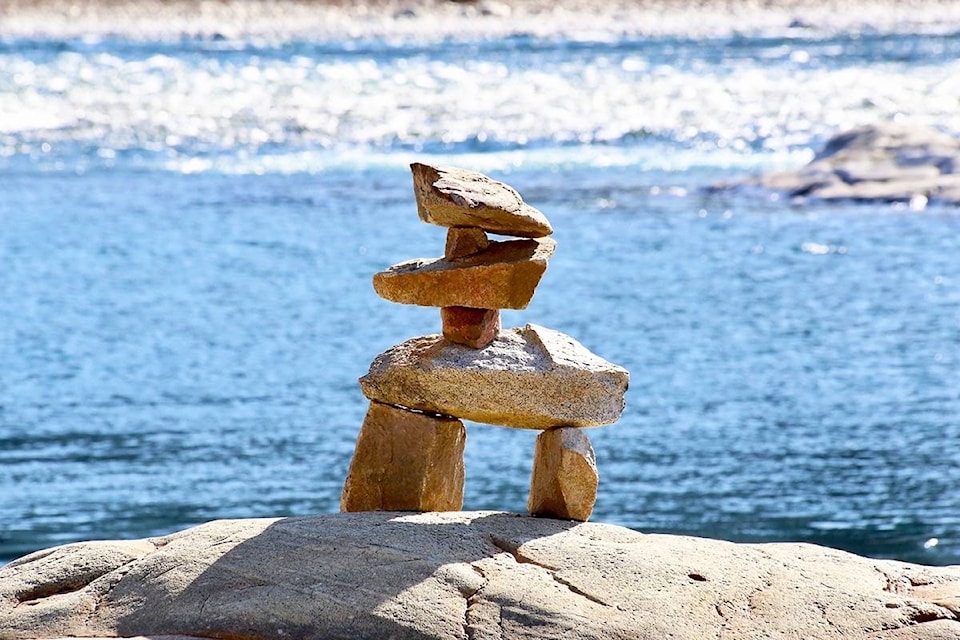The Trail Times is taking a break from coronavirus for a few minutes, having been inspired by a reader sharing his photo of an inukshuk he spotted near Gyro Park beach.
The word inukshuk means “that which acts in the capacity of a human.”
An inuksuk (also spelled inukshuk, plural inuksuit) is a figure made of piled stones or boulders constructed to communicate with humans throughout the Arctic.
Inuksuit are placed throughout the Arctic landscape acting as “helpers” to the Inuit. Among their many practical functions, they are used as hunting and navigational aids, coordination points and message centres. For example, they might indicate where food was cached.
Besides indicating the location of a cache or where an object had been hidden, such an arrangement may signify a change of direction from an intended course, or serve as a precaution or a sign for the follower to go to an alternative location or to the camp of a relative.
If a hunter lost a harpooned seal in shallow water, for example, the hunter’s companion may align two stones on shore pointing to where the seal went down, allowing it to be retrieved later. The configurations that shape these messages are known between hunting partners and often among members of their family.
Beyond being stacked one atop the other, large slabs of stone can be arranged in a number of ways. They can stand on end to form supports for a lintel and thus become an elaborate structure rather than just a heap. Many inuksuit, referred to as niungvaliruluit, are constructed with a “window” through which one can align with another inuksuk and thus project a sightline to a place below the horizon. Such an inuksuk, even when aligned to point the way to a mid-winter constellation, may not have served a strictly utilitarian purpose. After all, experienced hunters knew the direction of such places. Rather, as Inuit elder Osutsiak once explained, alignments were often constructed by those who felt the need “to attach their thoughts” to distant and familiar places, especially when they were a long way from home.
Among the largest and most conspicuous inuksuit are those that direct the traveller by acting as indicators. Before someone inexperienced embarks on a trip, someone who is familiar with the area being traversed shares information on the appearance and message of particularly significant inuksuit.
To knowledgeable eyes, indicator inuksuit can communicate vital information such as: depth of snow; safe or dangerous crossing places; where ice is dangerous in spring; the deep or shallow side of a river; where there is plenty of game or where fish spawn; where food or supplies are cached; where there are good hunting grounds for seal, walrus or whale; and where there are hauling-out places for seal and walrus, or landing sites for boats and kayaks.
Many other inuksuit are used as navigational aids. They can indicate the best route home, the position of the mainland from a distant island, the direction of a significant place inland, such as a ceremonial site, major transition points between water and land routes and the locations where fog is prevalent between islands.
They can also act as astronomical sight lines, lining up the viewer to the pole star and the mid-winter moon.
In addition to their earthly functions, certain inuksuk-like figures have spiritual connotations, and are objects of veneration, often marking the spiritual landscape of the Inummariit — the Inuit who know how to survive on the land living in their traditional way.
~ Sourced from Canadian Encyclopedia
